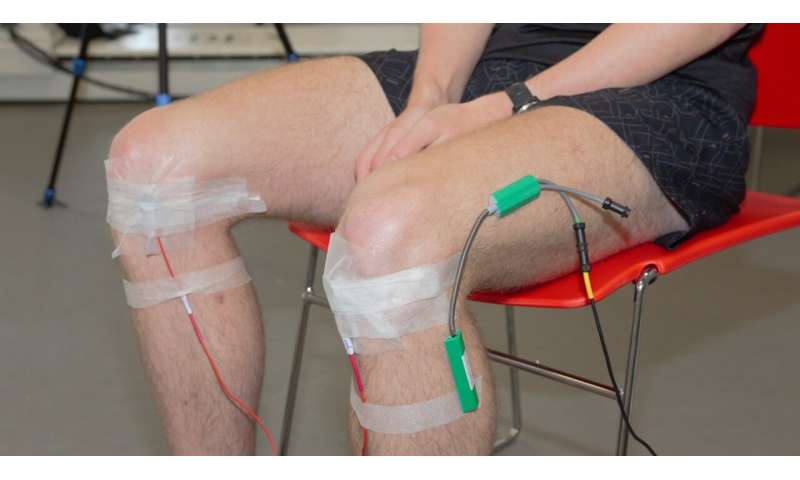Listening to ‘noisy knees’ to diagnose osteoarthritis: The first human cohort study

A new way of diagnosing and assessing knee osteoarthritis (OA) has moved a step closer with a major study paving the way for its use in research and clinical practice.
The technique involves attaching small microphones to knees, and detecting high frequency sounds from the joint components as people perform sitting standing movements.
The signals, known as acoustic emissions, are computer-analysed to give information about the health of the knee. The analysis is based on sound waveforms during different movement phases.
The latest study, published in PLOS ONE, is the first to investigate the use of the technique in a large local cohort of people previously diagnosed with knee OA. The results show that the technique can distinguish between healthy and OA knees, and that it works well both in general practice and hospital settings.
The research was conducted by a large multi-disciplinary team led by Lancaster University with partners from the Universities of Central Lancashire, Manchester and Cumbria, as well as the NHS in Lancashire and Cumbria. It also involved two businesses working on leading edge technologies for acoustic sensing and cartilage measurement.
The project began in 2013, funded by the Medical Research Council. It is an excellent example of how researchers from very different academic disciplines can work together to develop solutions for real-world clinical problems.
The wide range of disciplines and sectors involved created an innovative yet challenging project, needing meticulous co-ordination and project management which was provided by Lancaster University’s Health Engagement and Innovation Team.
Emeritus Professor Goodacre of Lancaster University, who led the project, said, “This work is very exciting because it involves scientists and clinicians working together as a team to develop an entirely new approach. Potentially, this could transform ways in which knee OA is managed. It will enable better diagnosis, and will enable treatments to be tailored more precisely according to individual knee condition. It will also enable faster, bigger and better clinical trials of new treatments”.

Source: Read Full Article



